Herbs & Spices
Explain how Europe benefited from cultural diffusion during the period c. A.D. 1000 - 1500.
In the Early Middle Ages (c. A.D. 700 - 1000), the spice trade was largely controlled by Muslim or Gujarati merchants throughout the Indian Ocean, tapping source regions in the Far East and shipping spices from India westward to the Persian Gulf and the Red Sea, from which overland routes led to Europe.
European merchants were confined to trading mostly within Europe. Spices were also brought from the east to Europe by Jewish merchants known as the Radhanites. In some sources, Jews are reported to have enjoyed a virtual monopoly on the trade in Western Europe during the late Merovingian and early Carolingian periods.
The Crusades, 1096 - 1291, increased European awareness and demand for spices. European Crusaders developed a taste for the new foods they discovered. They had a special fondness for local herbs such as coriander, parsley, basil and rosemary, all of which existed in their own nations but were virtually unknown in European cookery.
Spices were some of the most valuable items of trade in the ancient and medieval world. It has been claimed that this was primarily as a result of the need to disguise the taste of spoiled food (a lack of refrigeration and poor standard of hygiene meant that food often spoiled quickly), but there is no evidence to support this claim, and historians view it as highly unlikely: in the Middle Ages, spices from the East were a luxury item, affordable only to the wealthy, who certainly had unspoiled meat available as well.
With control of Middle Eastern ports on the
Mediterranean, the Italian city-states soon became wealthy from the spice trade.
This trade - driving the world economy from the end of the middle ages well into the modern times - ushered an age of European
domination in the East. The Venetian trader and explorer,
Marco Polo's expedition to China in the late 13th century was an attempt to open up a spice route
with the East.
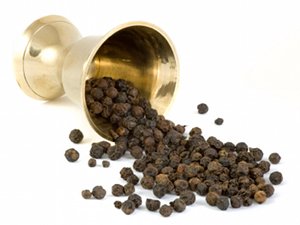
Black Pepper - The King of the Spices.
The demand for spices, started the European Age of Discovery, when West Europeans searched for a way to bypass the trading monopoly enjoyed by Italian city-states, such as Genoa and Venice. The route from Europe to the Indian Ocean around Africa was pioneered by Portuguese navigators, such as Vasco Da Gama in 1498, resulting in new maritime routes for trade.
The ultimate irony is when a Genoese navigator, sailing for Spain, discovered
the New World in 1492.
The purpose of Christopher Columbus
journey was to establish a new route in the spice trade by sailing west. To support his claim of reaching the Far East, he was quick to
describe to investors the many new spices available there.
Important Spices of the Trade
Black pepper was the most important spice in this trade. Other popular spices included: cinnamon, nutmeg & mace, cloves, and saffron.
Pepper
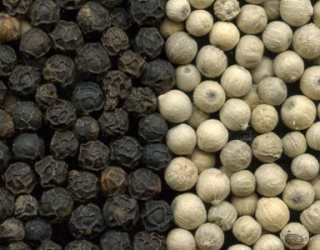
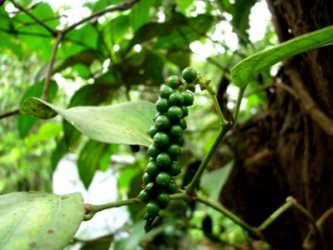
Black Pepper was grown exclusively in India, although there were inferior substitutes to be found in other places. It was used extensively in cooking but was also used as a tonic, a stimulant, even as insect repellent and an aphrodisiac. Today, peppercorns are, by monetary value, the most widely traded spice in the world, accounting for 20 percent of all spice imports.
Cinnamon

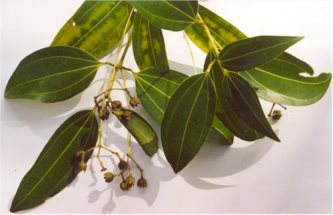
Cinnamon came from China and Burma (it was used not only for flavor but also for cosmetics, drugs, balms, oils, and perfume). Cinnamon is harvested by growing the tree for two years and then coppicing it. The next year about a dozen shoots will form from the roots. These shoots are then stripped of their bark, which is left to dry. Only the thin (0.5 mm) inner bark is used; the outer woody portion is removed, leaving metre-long cinnamon strips that curl into rolls ("quills") on drying; each dried quill comprises strips from numerous shoots packed together. These quills are then cut into 5 - 10 cm lengths for sale.
Nutmeg & Mace

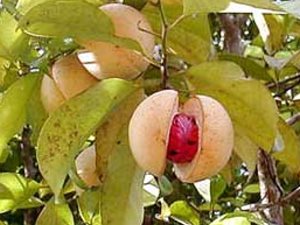
Nutmeg & Mace came from the Banda Islands.
Nutmeg is the actual seed of the tree, roughly egg-shaped and about 1 inch (20 - 30 mm) long and 3/4 inch (15 - 18 mm) wide,
and weighing between one quarter and one half ounce (5 and 10 grams) dried, while mace is the dried lacy
reddish covering or
arillus of the seed.
Cloves

Cloves came from only two islands: Ternate and Tidore in the Moluccas (south of Indonesia and Columbus goal) - sometimes known as the Spice Islands.
Saffron
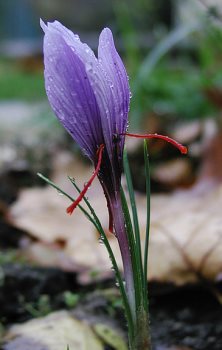
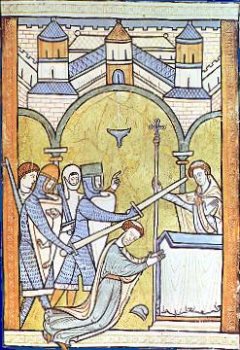
Saffron came from the Middle East. Medieval European illuminated manuscripts, such as this 13th century depiction of Archbishop of Canterbury Thomas Becket's assassination, often used saffron dyes to provide hues of yellow and orange.
As of the early 2000s, saffron is the world's most expensive spice (and in fact, the most expensive food by weight).
